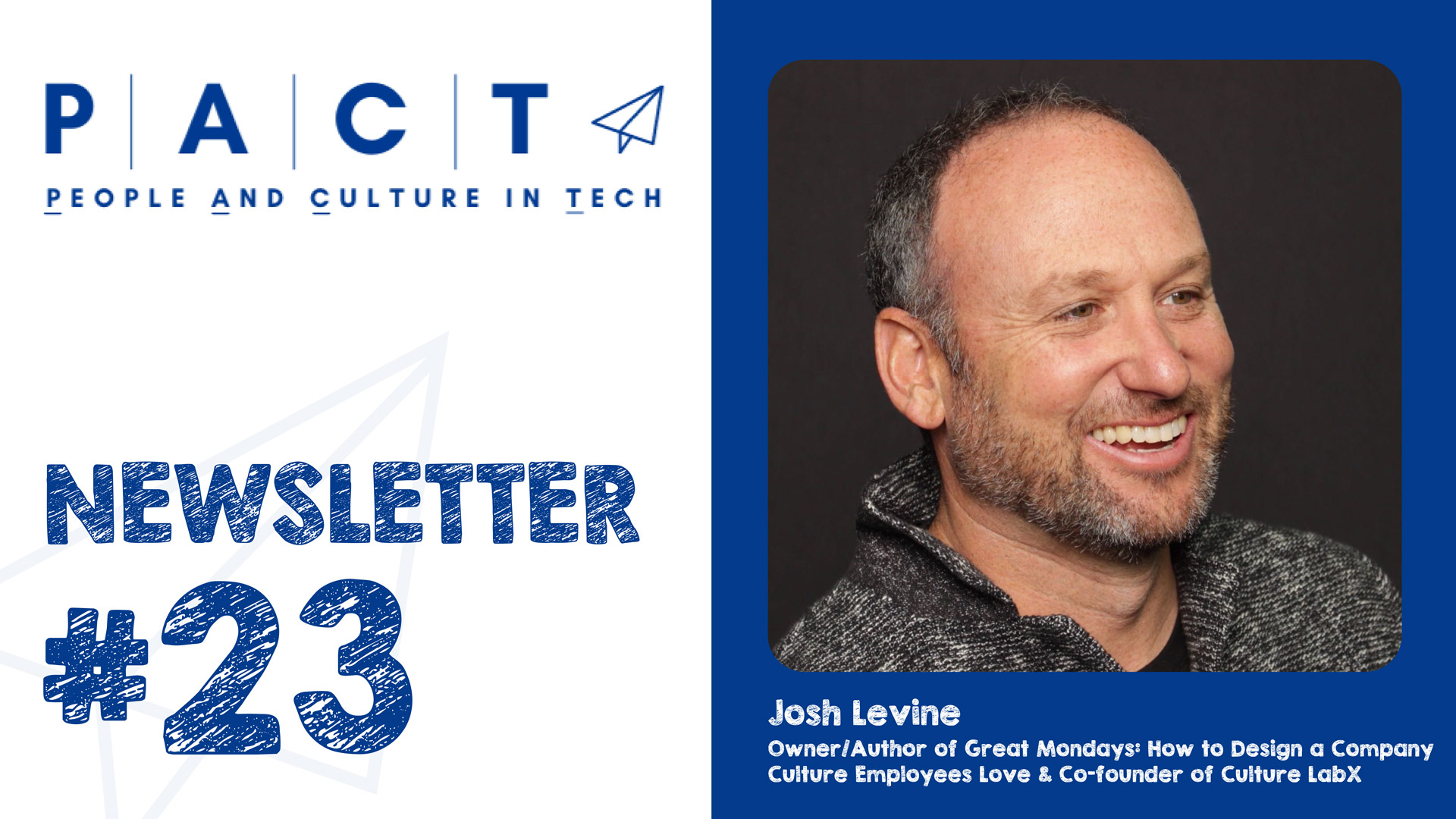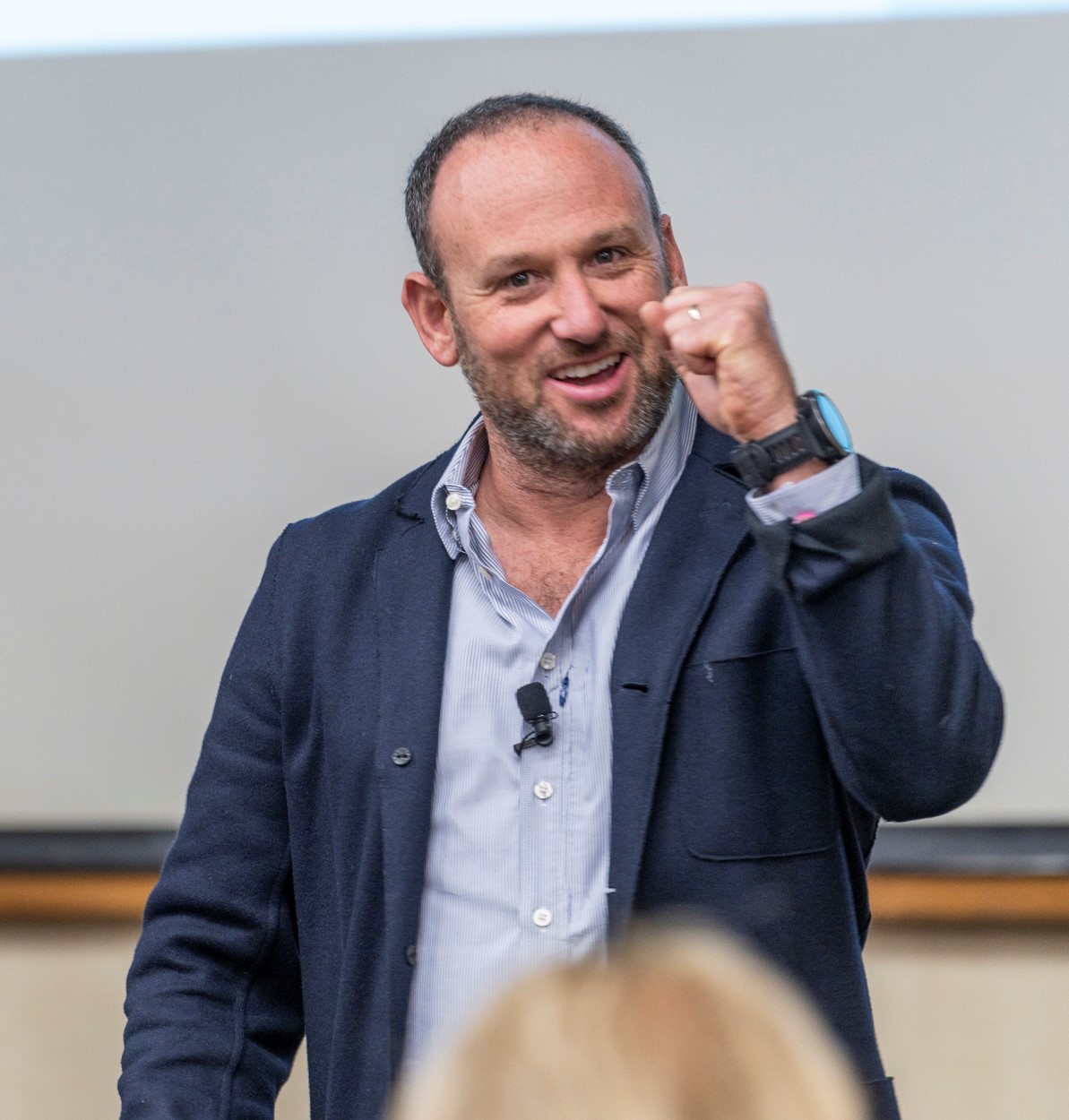Great Mondays Still Begin With Good Relationships (Whether Near, Far or Fully Distributed)
Jason McRobbie

While the physical workplace vanished overnight, along with the interactions that ‘happened to happen’ in shared proximity, relationships in asynchronous times remain invaluable. Speaking with Josh Levine, owner/author of Great Mondays: How to Design a Company Culture Employees Love and co-founder of Culture LabX, we get to the heart of relationship-building in changing times.
Key Takeaways:
- Leaders need to think about the employee value proposition very differently in a world of new options;
- Leaders need to understand that value through the lens of shared experience and the relationships the organization fosters inside and out;
- While there is no gold standard as yet, trust remains key to building relationships regardless of time or location.
SuccessFinder empowers HR teams with in-depth behavioral insights for predictive hiring and talent management. We’re obsessed with helping individuals and organizations achieve their full potential.
Be sure to follow along on LinkedIn for content you don’t want to miss!
Great Mondays in Asynchronous Times
Without doubt, the pandemic measures put a strain on any and all concepts of business as usual—including the relationships that provide the resilience to not only survive, but thrive in asynchronous times.
On the flip side, we have come away with a whole new appreciation for the relationships in our lives, including the ones most taken for granted at work.
For Great Mondays’ owner and author Josh Levine, the past two years have driven home the fundamental principles around his framework for designing and managing great cultures. Over the course of the past 15 years, he has driven home the criticality of culture to countless organizations and audiences, encapsulated by six components of design and management: purpose, values, behaviours, recognitions, rituals and cues.
“We need new ways to consider how we operate together and work together and that is one or the roles the components of Great Mondays plays. It really was developed as a first, best-guess attempt at “how can I design and manage my culture” and this was pre-pandemic. Now post-pandemic it takes on new meaning,” said Josh. “People are understanding that as we evolve, as a society, as communities and as businesses, value is no longer the thing at the cheapest price; it is providing to the customer an experience or meaning. The same is true internally. That’s why you need to get the people on the inside to see that and do it for their own people as well.”
"People have a lot more opportunities these days, so if you are not providing the motivation and excitement about contributing to a larger thing, there are lots of ways to make money,” said Josh. “Businesses need to be able to provide their people with a better value proposition, to be able to fulfill their people, so their people can support the business better.”

Inside Out: The Value of Community
“The cost of not investing in relationships is you’re connected to less people and you’re less connected to the people you are connected to,” explains Josh. “So it’s really about the exchange of value and what else your company can offer. That’s a community, it’s people. I am not saying that work has to be your life, but you have to have some work life.”
And life in your work.
Josh shares a story about Lodge, a hospitality company where that relationship and community building is grounded in its fundamental purpose. They buy and convert motels into hipster camps and the employee/customer/community equation is intrinsic. “You have the people showing up there and the people working there, and they’re all on board, all totally simpatico with where and who they are.”
The challenge, Josh points out, is evolving that community in asynchronous settings, as well as scaling it to larger companies.
“What happens when it is HP or GE and the challenge is to articulate a purpose that inspires hundreds of people as cross industries. That’s a pretty huge community and there might not be that same level of shared passion,” he said. “So the larger the company, the more clear the department, the group and the managers need to be about bringing those people together. Maybe they make their own purpose statement. Maybe it’s about relationships. There are a lot of ways to go at it.”
Relationships No Longer Just Happen
“So here we are when there are no longer perks in the office because there is not an office anymore and at the same time that thing that they had and took for granted no longer exists—which is relationships,” said Josh. “Those relationships that ‘happened to happen’ because people happen to be in the same place at the same time—smart companies and smart leaders facilitated that. They created collisions at Pixar, places where people could intersect. Others put the coffee set or water cooler between departments so people could come together, but it was happening without very much effort.”
“Now that it’s not, particularly for those that have not been paying attention, there is still a complete lack of effort to facilitate those relationships,” he added. “I hope that by the end of this year we have leaders who say, “Oh, this is important. We need to help people establish those relationships that are not only the reason they come to work, but ‘how’ they work.”
In an asynchronous world, Josh notes, if you are not paying attention to those relationships, all that magic that happened to happen goes away in the new reality.
Fresh Forms and Forums Needed
“We no longer have the form that enables us to create culture, which was the office. We had floors and we had a location, and we had shared lunches and a shared experience—the premise of working downtown. We had little neighbourhoods with our offices and cubes. We could put up signs on the walls about what we’re doing and we could have town halls where everybody comes together. Those are all gone away,” said Josh. “So we need more of a philosophical structure. Lacking the old form, we need to shape new ways of how we can bring people together.”
As for how that comes about, Josh looks to companies like Github and Buffer who were already 100 per cent remote prior to the pandemic. “They began as the innovative edge of that scenario, but that was the edge case. But the tech organizations also happened to be hiring people comfortable working with technology and believing in that, so they had the tools to work asynchronously earlier than others and were just early adopters.”
Communication Caveats and Kudos
Like many, Josh has worked his creative mojo remotely, collaborated on MURAL, Padlib and Google Slides to great effect, but remains conscious of the lingering question: “When is it important to bring people together to share space?”
Looking to a model of tomorrow today, albeit not one he thinks works for all, he points to RGA Razorfish, the advertising agency that sold both their downtown offices in San Fransisco and New York to open smaller, purpose-led spaces in less expensive areas of the cities. Work is done remotely and when a creative collaboration needs to happen, they have that space.
“I think that’s great and works if they happen to live in the same area, but it’s not the future per say, because why should we not be able to collaborate with better tools?” Josh asked. “Everyone can have a little white board they draw on or whatever it might be, so there is no reason we cannot collaborate virtually.”
Making the Most of Together Time
The real question then becomes, "Do we ever need to be together?”
For any company looking to invest in what truly underpins its success, Josh said, “Yes, and I think perhaps the only reason we really need to come together is for that relationship building: trust, understanding, connection.”
He points again to 100%-distributed companies Github and Buffer, which bring everybody together their teams together for one or two weeks at a time, once or twice a year. “They get some work done, but it’s mainly about relationship-building. That to me is really compelling and important,” said Josh. “I think the other question then becomes how do we to grow relationships when we are distributed or asynchronous for the other 50 weeks of the year? “
After recent lengthy chats with friends at Donut Design, what emerged was another question: How do you purposefully design and foster getting to know about other people outside of their work lives?
Nurture the Ties That Bond
The answer is perhaps as unsurprising as it remains challenging. Getting to know people on a more human level.
“Connecting with people outside of work, outside of their work persona, is really, really important to building trust. Finding commonalities is a great starting point, which is why the most common Slack channels are pets and babies,” said Josh. “Everybody loves dogs and babies, but that is just scratching the surface. What are the other opportunities?
Josh encourages you to explore within your own diverse teams. “Is there someone in your company passionate about Honda Civics or a particular type of car? The more specific, the fewer people, but the more passionate they are going to be.”
Creating scenarios for people connect in an asynchronous world is as critical to culture as bridging the traditional silos that can evolve in any growing organization.
“Relationships. This is how you do it. Smaller companies have taken to this and in larger companies it is happening in smaller departments first because everyone at the CEO level is panicking about everything else,” Josh said. “They’re not necessarily seeing this yet, which is why I am trying to ring the bell real loud.”
BACK










